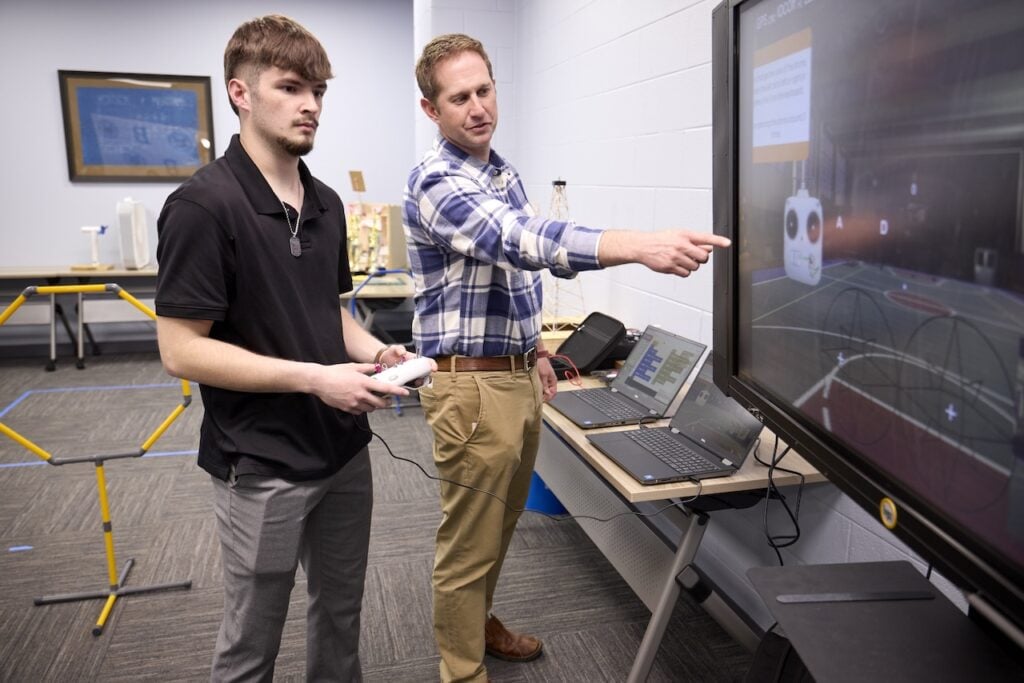Across the country, communities in the StriveTogether Cradle to Career Network are working to put more young people on a path to economic mobility. StriveTogether’s seven cradle-to-career outcome areas are critical milestones that shape a child’s educational journey and future success. Each post in this series will provide an in-depth look at one of these key areas, highlighting the challenges, opportunities and impactful strategies that can drive positive change.
High school completion is crucial for long-term success. High school graduates report better general life outcomes, and graduation is associated with healthier behaviors, better physical health and lower rates of incarceration. Economically, high school graduates have lower unemployment rates and higher wages. In fact, a high school diploma leads to higher earnings throughout adulthood, with graduates earning a median of $9,500 more per year than students who drop out. 
The Appalachian Cradle to Career Partnership (AppC2C), serving Appalachian Kentucky, is already seeing graduation rates above the statewide average. But just graduating isn’t enough. They’ve additionally set a goal to increase the percentage of students graduating high school college- and career-ready in the Southeastern Kentucky Promise Zone. Their target is an increase from 68% in 2021 to 85% in 2028, translating to 328 additional students.
To achieve this, the partnership engages in strategy working groups, using the Annie E. Casey Results Counts method to convene multi-sector stakeholders around desired outcomes. One example of their collaborative effort is the Middlesboro Accountability Partners (MAP), formed by two school districts that received a federal literacy grant. By aligning efforts and adopting a culture of mutual accountability, the group identified core stakeholders and developed strategies focusing on early intervention, communication and adult intervention.

The partnership also employs a robust, data-driven approach to assess and improve high school graduation outcomes. They access data from the Kentucky Department of Education and the state longitudinal data system, enabling them to analyze trends across the service region and examine variations within demographic subgroups. This data allows for targeted interventions, such as addressing the impact of student mobility rates on graduation outcomes.
For instance, when the partnership received data indicating that more students were transferring to homeschool within the service region compared to the region at large, they used this information to convene a working group to discuss biases and reasons for student mobility. This proactive use of data ensures that strategies are tailored to the unique needs of the region.
Youth and family perspectives are integral to AppC2C’s work. The partnership employs Family Educational Rights and Privacy Act (FERPA) agreements with partner school districts to access student data. This allows them to identify students who have not yet filled out their Free Application for Federal Student Aid (FAFSA) applications or met with college and career advisors. In late 2021 and halfway into 2022, the partnership gathered community stakeholders — including school administrators, teachers, business leaders, health care administrators, parents and students — to prioritize factors inhibiting equitable outcomes and develop strategies for postsecondary success. This collaborative approach ensures that the strategies are community-informed and address the real needs of students and families.

And the partnership’s work is holistic, not just centered around a single outcome area. By focusing on key segments of the cradle-to-career pipeline, including kindergarten readiness, early reading and middle grade math while ensuring students are safe, healthy and supported (which they measure via absenteeism data), AppC2C has supported students and families throughout their educational journey. As a result, the high school graduation rate in the service area has risen from 94.9% in 2019 to 95.2% in 2020-2021, surpassing the state average.
The Appalachian Cradle to Career Partnership’s commitment to data-driven strategies, community collaboration and addressing the unique needs of their students demonstrates the impactful work being done to improve high school readiness outcomes. Through continuous improvement and shared accountability, they are paving the way for a brighter future for all Appalachian students.
High school readiness is one of the seven key outcome areas addressed by the Network — all critical steps on the path to economic mobility. Learn more about the importance of high school readiness in the StriveTogether cradle-to-career outcome guide, here.






